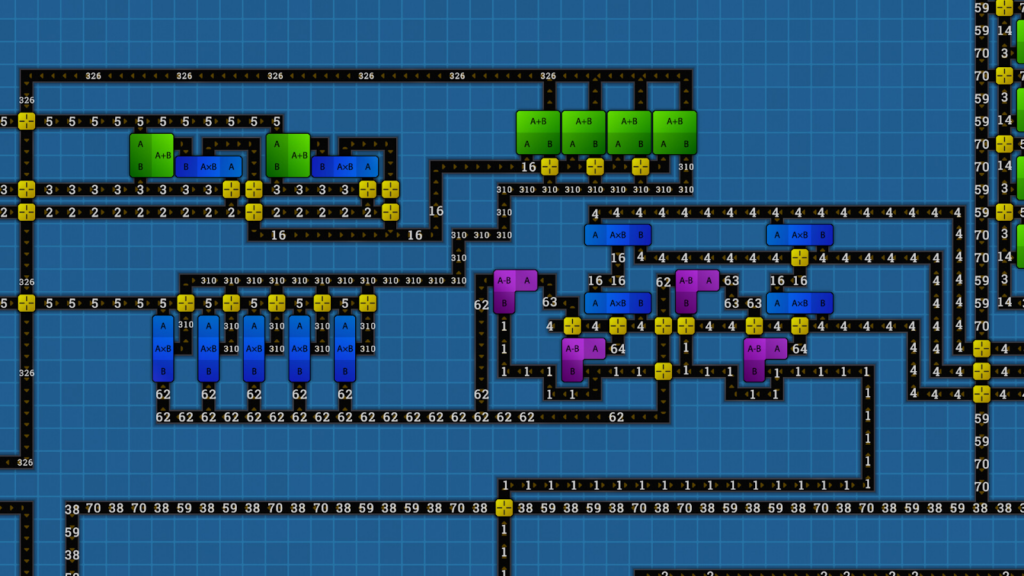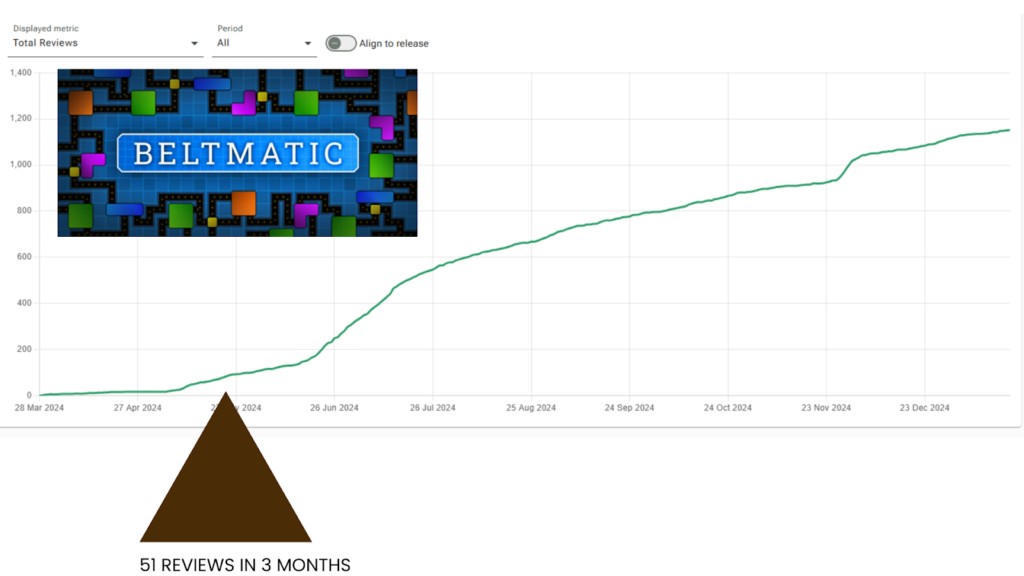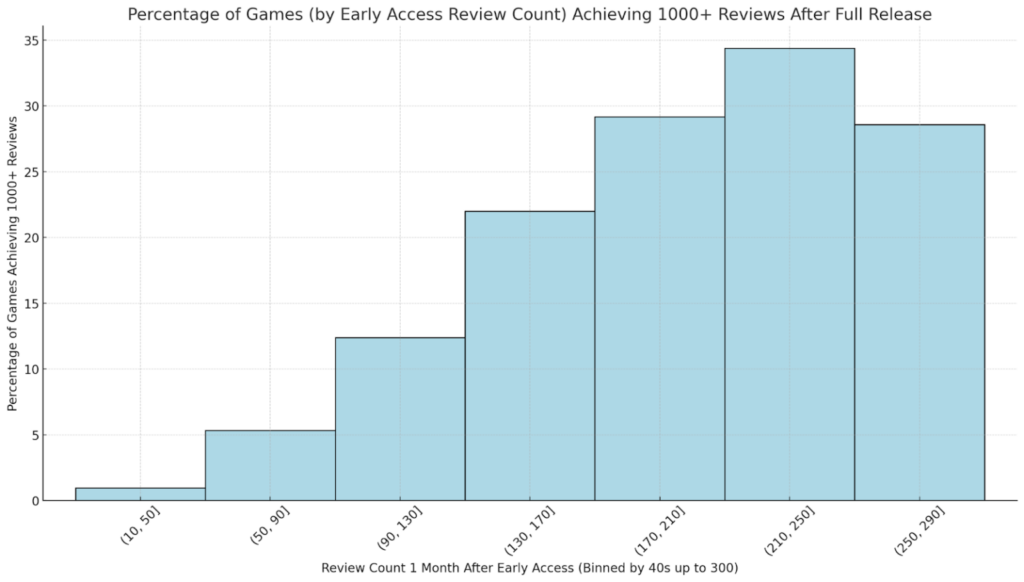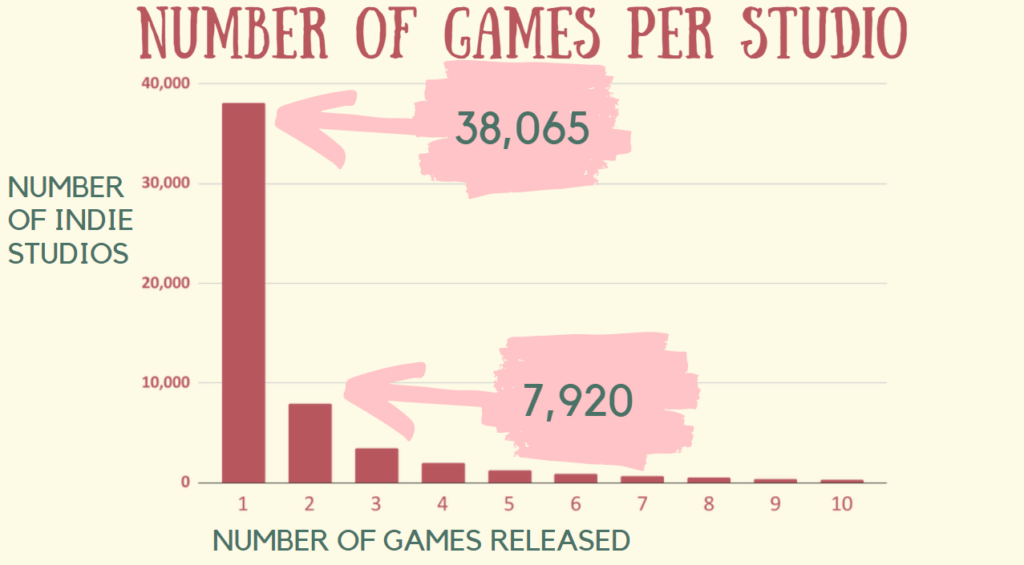
Congrats, you launched your game…but it didn’t sell very well.
Maybe you got 50-something reviews in the first month. Reviews are positive but you didn’t make back enough to really justify development cost.
So now you are wondering, how do you market your game to boost sales and maybe turn this game around to be a bestseller?
I mean, Among Us did it! No Man’s Sky did too!
It reminds me of the classic scene from Dumb & Dumber
So you’re telling me there’s a chance!
In today’s blog I am looking at how feasible it is to actually turn around a weak launch.
The TL;DR Answer: If your game didn’t reach 1000 reviews within about 6 months of your launch, marketing your game post launch doesn’t really help. If your game (both Early access or 1.0) failed to earn at least 100 reviews in the first month of launch, there is a 0.2% chance of having a game that earned 1000 reviews.
How many games actually turn around a bad launch?
Every year I pull data about the number of games that reach 1000 reviews. 1000 is a somewhat arbitrary number that I use to classify whether the Steam audience and algorithms loved the game. 1000 reviews isn’t the trigger, it’s just a symptom that Steam has boosted the game with its arsenal of promotional widgets such as Daily Deals, featuring during seasonal sales, placement in “more like this,” and just higher ambient visibility.
For more details on why 1000 and all the games that reached 1000 in 2024, read this blog post.
This year I wondered, when a game hits 1000 reviews, is it a slow grind or an instant hit?
The Answer: Not long.

In 2024, almost 75% of all games that reached 1000 reviews did it within 3 months of their launch (this applies to both EA and normal releases.
There were only 17 games last year that hit 1000 reviews that clawed their way there across several months. But all of those slow-growing-hits had at least 225 reviews by the end of their first month on Steam. Here is a list of those slow building games, I put the three games with the biggest comeback at the top.
- Beltmatic (17 reviews @ 1 month)
- Chess for idiots (172 reviews @ 1 month)
- Multi Turret Academy (291 reviews @ 1 month)
- Dominions 6
- Welcome to ParadiZe
- War Hospital
- Slaves of Rome
- Garden Life: A Cozy Simulator
- Angel at Dusk
- Hospital 666
- Necrosmith 2
- Love n Life: Lucky Teacher
- Minimalist Tower Defense
- Miss Neko: Pirates
- EXIT KUN
- Sex Coach: Hot Yoga – Prologue
- Rabbit Hole
It is my general sense that the Steam Algorithm is like a spider sitting in the middle of a web. If it senses even a tiny bit of movement somewhere in its domain it jumps on it.
The Steam algorithm is constructed to quickly identify games that “Have the Magic” then catapult it to all the visibility in the world. If the algorithm doesn’t see success, it does nothing which is essentially like paddling upstream with a toothpick.
The only game that beat the odds: Beltmatic

There was only 1 game that released in 2024 that managed to turn around a weak launch and still capture 1000 reviews: a minimalist, math-based, crafty-buildy automation game named Beltmatic. (*footnote)
Here is the lifetime review history for Beltmatic

(This chart was generated on vginsights.com)
Beltmatic launched in March of 2024.
It launched with only 28 followers (estimated about 300 wishlists)
There was only 3 months of pre-launch marketing (vs the recommended 6)
There was no trailer for the game until 3 days before launch (original trailer)
It earned only 51 reviews in its first 3 months.
So how did the team turn around a “failed launch”?
I haven’t spoken with the developer but I did some digging and it looks like a 2,000 subscriber youtube channel named Clickteam Fusion Developer first found it a few days after launch and uploaded a 28-episode full walkthrough series. The number of reviews slowly climbed after that.
Then, three months after launch, when the game only had 137 reviews, youtube megastar Real Civil Engineer played it TWICE and set it on its upward trajectory.

But interestingly enough, Real Civil Engineer playing the game didn’t instantly skyrocket the sales. The youtube algorithm is SLOW. Despite the first let’s play video getting 2 MILLION views, the game only gained about 300 reviews (an estimated 9,000 sales) in the month after Real Civil Engineer’s first video. That is a view-to-purchase conversion rate of ~0.45%.
But, the real benefit of Real Civil Engineer is that he introduced the game to other channels that covered it shortly after him:
Success isn’t due to one streamer, instead it was just kickstarted by one. These secondary content creators helped push the game slowly over time. Success is a series of drips, not a deluge.
So do I have a chance?
In 2024, there were 445 games that reached 1000 reviews within the same year and I found only one game that beat the odds and turned around a weak launch into something “successful.”
That means there is a 0.2% chance at a post launch resurrection within the first year.
I think a big reason Beltmatic looks like a “surprise success” is because the game wasn’t fully marketed before the launch. The game didn’t follow the recommended meta of get a demo live, reach out to streamers, get 7000 wishlists, do a Steam Next Fest, launch after at least 6 months.
It was a good game hiding behind non-existent marketing.
But what about Early Access games?
The Early Access (EA) rule of thumb is that your EA launch IS YOUR LAUNCH. EA launch is not a beta test, it is not “getting feedback.” It is your launch.
The same goes for EA success: If the game doesn’t do well in the first month, there is almost 0 chance of success later.
I scraped all of the EA games that have ever been released on Steam (with help from VGInsights.com) and wrote a blog post about this and drew up this chart.

Basically if you have under 100 reviews in the first month of your EA launch, you have about a 5% chance of reaching 1000 reviews in the month after your 1.0 launch.
Your destiny is set as soon as people can start paying for your game.
The Sunk cost fallacy & Opportunity cost
This blog post is a REAL TALK moment. If your launch didn’t go as planned, and your game got under 100 reviews in the first month. I am sorry. There really isn’t much evidence that the game will pull off an “Among Us” resurrection.
I know you put your heart and soul into this game. This business is very hard. Very very few games find success on Steam.
If you didn’t get sales In most cases I don’t think it is wise to continue spending more time and money trying to turn your game into a success.
As mentioned above a game that didn’t get 100 reviews in the first month of launch has a 0.2% chance at later success.
I looked at several popular genres on Steam and found the number of games that succeeded (to get a more full list, see here) were much higher than 0.2%
| Genre | Num games with 1000 Reviews | Total released in this genre in 2024 | Percentage reaching 1000 |
|---|---|---|---|
| Open World Survival Craft | 23 | 94 | 24.47% |
| Farming | 10 | 48 | 20.83% |
| Roguelike Deckbuilder | 11 | 164 | 6.71% |
| Management | 19 | 350 | 5.43% |
| Simulation | 27 | 718 | 3.76% |
| 4X | 3 | 85 | 3.53% |
| Idle | 20 | 656 | 3.05% |
| City Builder | 10 | 370 | 2.70% |
| Metroidvania | 6 | 271 | 2.21% |
| Horror | 47 | 2,599 | 1.81% |
| Automation | 5 | 319 | 1.57% |
| RPG | 17 | 1,161 | 1.46% |
| Tower Defense | 8 | 557 | 1.44% |
| Racing | 9 | 670 | 1.34% |
| Sexual Content | 20 | 1,592 | 1.26% |
| Souls-like | 3 | 363 | 0.83% |
| RTS | 4 | 488 | 0.82% |
| 3D Platformer | 10 | 1394 | 0.72% |
| Colony Sim | 1 | 158 | 0.63% |
| VR | 2 | 467 | 0.43% |
| Hidden object | 5 | 1290 | 0.39% |
| Puzzle | 14 | 3902 | 0.36% |
| 2D Platformer | 5 | 2019 | 0.25% |
| Point And Click Adventure | 2 | 1499 | 0.13% |
I know there might be contract obligations or structural reasons to keep supporting your game, but if your measure is only sales, your odds are better if you just start work on the next game.
People algorithm vs Steam algorithm
In my earlier blog about how the Steam algorithm worked regarding “failed” launches, I noted that Valve has consistently said that the Steam algorithm does not have “black marks.” They don’t penalize you if the game fails.
Then why do only 0.2% of games not succeed after a weak launch?
It’s the people.
If you did a good job sending your game to a bunch of content creators, they very well might just say “eh, this game isn’t interesting” and not play it. So even after launch if you reach out to a bunch more creators, they will also likely say “eh not interesting.”
Similarly if fans think “eh not interesting” there will be no word of mouth to continue that “drip drip drip” of sales.
So you never get that boost that Beltmatic experienced.
That isn’t the Steam algorithm holding you back, it is the people not showing it around.
Should I add a level editor?
A common strategy I hear developers say is “Well our platformer sold poorly, but we are going to add a level editor to boost sales.”
I don’t think that will help.
I wrote a blog a while back looking at Jonas Tyroller’s 3 games. One of them is a platformer that sold well (but not as well as his 2-crafty-buildy games).
To try and boost sales for his platformer Will You Snail? Jonas added a level editor. The following graph is the concurrent player count (CCU) for the 3 games. Will You Snail? is the red line. Adding a level editor had 0 impact on CCU (and the game is popular with 1000s of reviews).

Adding a level editor just doesn’t affect sales.
But what if we add some elements to make it a city builder? Or what if we add a high score speed run table!?!
The game is set and adding features that try and bend it to be something it isn’t just won’t change things. It is better to just start from a blank slate.
“But we are going to add Co-op! People love co-op!”
People do love it. I don’t have data on how adding Co-op to a game affects sales. Adding co-op had a big impact on an already popular game like Project Zomboid. In the following chart that spike is when they added co-op. But it was already a mega-popular game so there was a deep player base already to provide word of mouth marketing for the co-op mode.

I have not heard about co-op turning a “weak” game into a best seller. If you know of an example, let me know. But my hunch is that if people don’t like the single player experience, they won’t like it with a friend. And if the game sold poorly, there is not the big player base who will help you promote your co-op update.
So how do I market my game after I launch?
Steam is built to promote the games it thinks have proven to sell.
Unfortunately, unless your game earned 100 reviews in the first month, there is very little you can do. The promotional opportunities within the Steam platform are shut off until you can bring in around $150,000 gross revenue pre-Steam cut.
If you are one of those games that earned $150K in your first year, congrats, there are many more options. You can do Daily Deals / Midweek Madness / Weekend deals. Free updates have a big impact because Valve might feature you (even give you popups sometimes). Content creators will cover you again with that update you published. During Winter and Summer sales Valve has been featuring top sellers. Good sales beget more good sales.
So what if you didn’t reach that threshold? How do you market it?
My advice is, reach out to as many content creators as you can. Go big! I am talking like 1000 emails to 1000 content creators. If after one to two months of this blitz you don’t see any uptake like Beltmatic did, it isn’t going to happen. I am sorry. There is a microscopic chance that it will eventually become a hit.
But please don’t quit. It won’t happen with this game, but it doesn’t mean you are bad at this. Independent game development is a long game.
It is not get-rich-quick.
You need to make more games.
Move on, start your next one.
The faster you move on, the better your odds are of your next game succeeding.
Let me end this post with one of my favorite graphs:.

Footnote
I am writing this in February 2025. Games that released in Q4 of 2024 have not had the full 4 quarters to ramp up sales. So there might be one or two more Beltmatics that pull this off. But it is still incredibly rare. If at this point I see only 1 game like Beltmatic, it likely won’t happen. But I will check in again in a few more quarters.